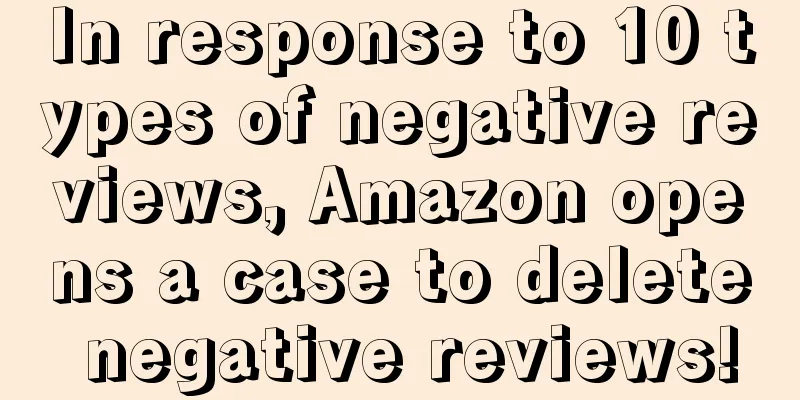|
Time flies, and Amazon Black Friday 2024 is about to come to an end. According to Adobe Analytics, this year's Black Friday online sales in the United States are expected to increase by 10.2% year-on-year to $10.8 billion, setting a new record. Mobile devices made a particularly significant contribution to Black Friday, with sales increasing by 12.1% year-on-year. But judging from sellers’ feedback, the sales performance of this Amazon Black Friday, which is known as the “longest in history,” seems to be lower than expected. Amazon's Black Friday in 2024 will start on November 21st and end on December 2nd, spanning 12 days. Survey data shows that regarding the sales situation on the first day of Black Friday , among the 679 sellers surveyed, only 25% reported an increase in sales, 40% said that the traffic was mediocre , and even 23% of the sellers mentioned that sales decreased instead of increased. At the same time, according to industry sources, in the following week, many sellers also said that Amazon's Black Friday traffic had declined. [Hardcore dismantling of brand practical cases, insight into new paths for overseas growth, all in "Brand Growth" click here] Many sellers at the time attributed the sluggish sales on the first day and even the first week of Black Friday to the fact that Amazon’s Black Friday campaign lasted too long and that the real Black Friday was actually November 29. Now as time enters December, the "real Black Friday" has come to an end. According to industry feedback, on November 29, although some Amazon sellers reported an increase in orders and sales, the general sales situation was: sales volume increased, but profits decreased. In terms of the sites, the "Matthew effect" of the US site, which was the first to start the preheating war, was obvious : products with average traffic were once again "regrettably running along", while products with good sales volume saw a surge in orders... It is worth mentioning that some sellers who operate both the main site and the low-price mall said that the orders on the low-price mall are 7 to 8 times more than those on the main site . The European site also showed polarization, but the overall sales performance was slightly worse than that of the US site: some sellers reported that sales on Black Friday were lower than in the early stages of the preheating period, but some sellers on the UK site also mentioned that although the site did not receive many orders, the profits were relatively high. In addition, compared with the US and European sites, the Japanese site , which "strikes back" after the US , has many sellers whose sales have exceeded expectations. A seller on Amazon Japan said that he broke the single-day record on Black Friday and exceeded his expected target for November. In terms of categories , according to Adobe Analytics data, toys became the main growth driver of Black Friday online sales in the United States this year, with sales increasing by 622% compared to the daily average in October. Online sales of jewelry, home appliances , personal care, clothing and electronics also increased by 561%, 476%, 440%, 374% and 334% respectively. Judging from seller feedback, some sellers on Amazon’s US site also mentioned that sales of electronic products have doubled compared to usual days . But it is worth mentioning that the report also pointed out that during this year's Black Friday, promotional discounts in multiple categories such as toys and electronic products reached a new peak. This means to a certain extent that many sellers' "explosive orders" are at the expense of some profits . This is the “longest” Black Friday and also the “curliest” Black Friday. Although overall sales have increased again and hit a new high, the profits of Amazon sellers have generally fallen to a low point. Here, combined with observations in the industry and discussions with sellers, a simple analysis of the reasons for this situation is made: 1. Under the influence of multiple factors, consumers are cautious in shopping On the one hand, according to foreign media reports, under the pressure of Trump's possible tariff policy , American consumers are re-examining their consumption behavior and formulating stockpiling strategies to cope with the possibility of another rise in prices. On the other hand, in an economic environment with continued inflation , Black Friday will last longer, consumers' attention will be distracted, impulsive consumption will be reduced, overall shopping considerations will become more rational, and sensitivity to discounts will be unprecedentedly high. In addition, many browsers now have built-in shopping plug-ins that can "view product price history". Many consumers in the United States mentioned that during Black Friday, they would not buy any products that were marked up or discounted based on the plug-ins, and would wait until they needed to buy other ordinary products unless they were discounted by more than 30%. 2. Amazon fees increased, and operating costs increased Judging from feedback from the industry, the shrinking profits on Black Friday are largely due to the increase in operating costs. According to Amazon's time division, October to December is the peak sales season. During this period, the platform's storage fees, FBA delivery fees, etc. will be increased , and the storage fees are even about 3 times that of January to September. At the same time, this year Amazon has also added storage configuration fees and Prime member exclusive discount fees, which have had a certain impact on sellers' profits. In addition, there is a surge in ACOS during Black Friday, which sellers often mention , but I will not go into details here. 3. Multiple platforms increase their Black Friday spending, intensifying market competition "Intensified competition and involution of platforms" - this is a cliché, but it is also a fact that is hard to deny. In 2024, not only Amazon, but other platforms will also have longer Black Friday activity cycles: Temu took the lead on October 20, opening the industry's longest Black Friday carnival season of 47 days; SHEIN started warming up on October 23, and the entire Black Friday promotion lasted until early December; and TikTok Shop in the US area prepared a Black Friday promotion period of more than half a month, which also ended in December... Today’s fierce market competition not only directly divides away part of Amazon’s traffic, but also indirectly intensifies the internal competition among Amazon sellers. Some sellers said frankly: This year, many Amazon sellers’ goal for Black Friday was to clear inventory and improve rankings, so most of them made a loss to gain publicity. This also reduced Amazon’s overall profit to a certain extent. It is worth mentioning that according to Adobe's forecast, Cyber Monday sales this year are expected to remain strong, with sales possibly reaching US$13.2 billion, but prices of single products in many categories are still on a downward trend, with electronic products dropping by 30% and clothing by 23%. It has been observed that in response to the "continuous decline" in profits from Amazon's year-end promotion, many sellers have begun to consider adjusting their future sales strategies and goals, including no longer relying solely on promotional events, but instead paying more attention to daily operations and deploying more platforms . I wonder how the Black Friday situation is going for all sellers this year? What are your plans for future adjustments? Welcome to vote or share in the comments section~
|










